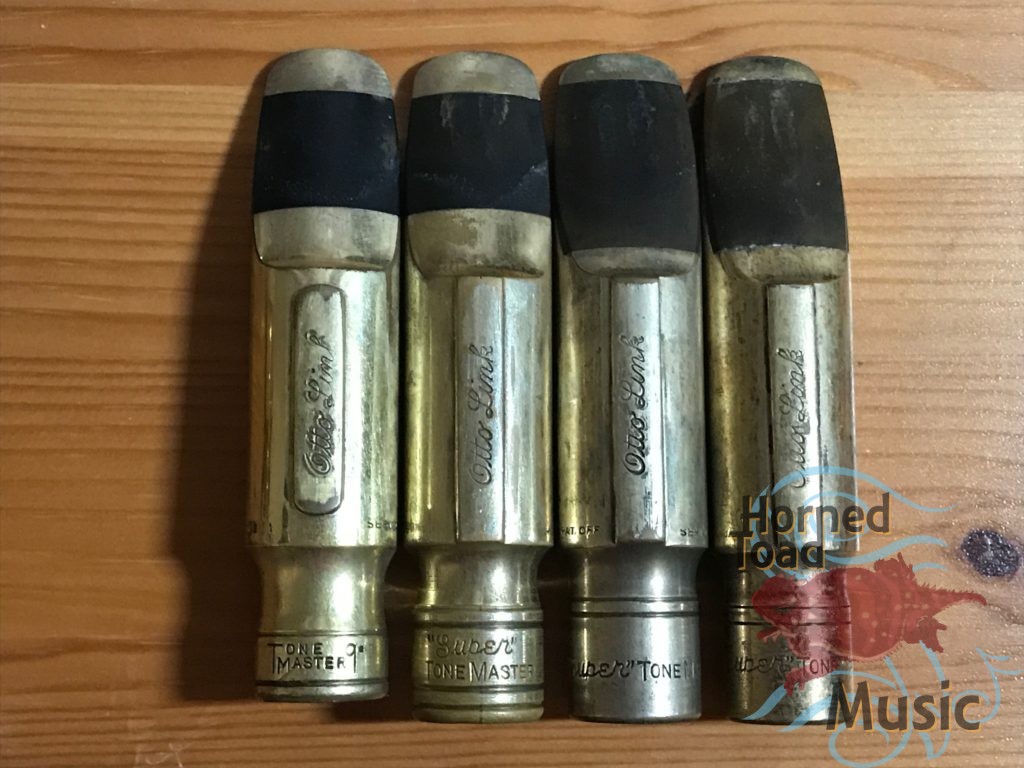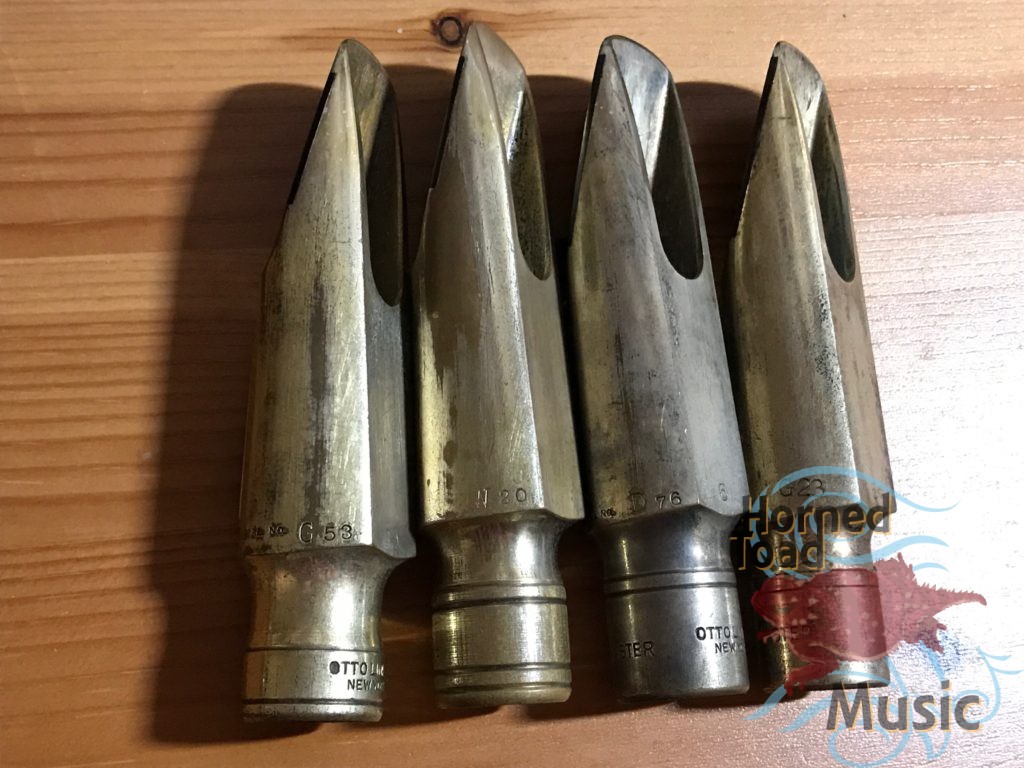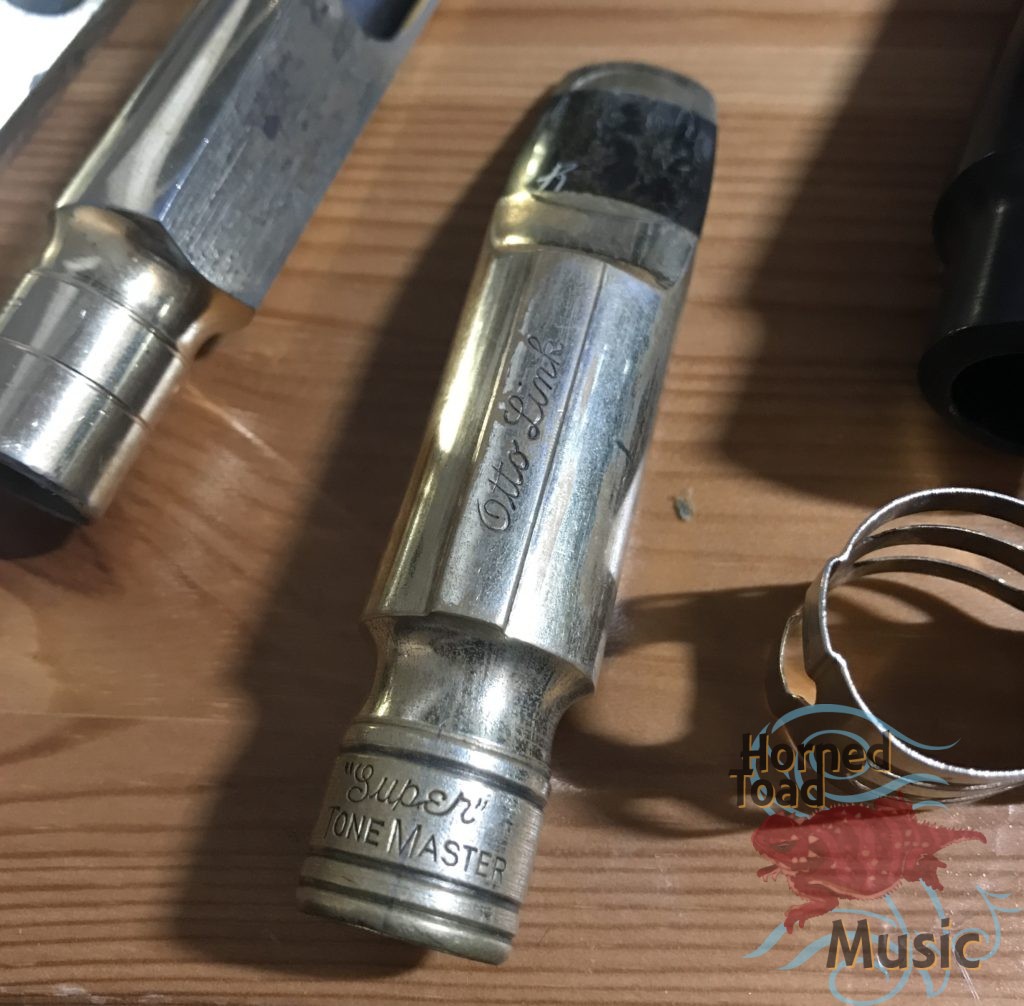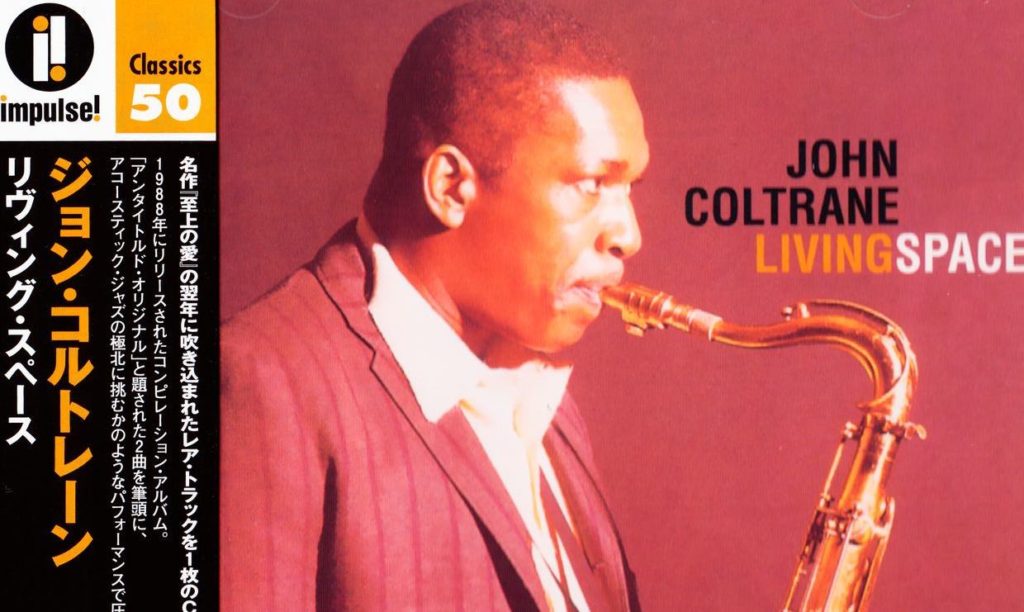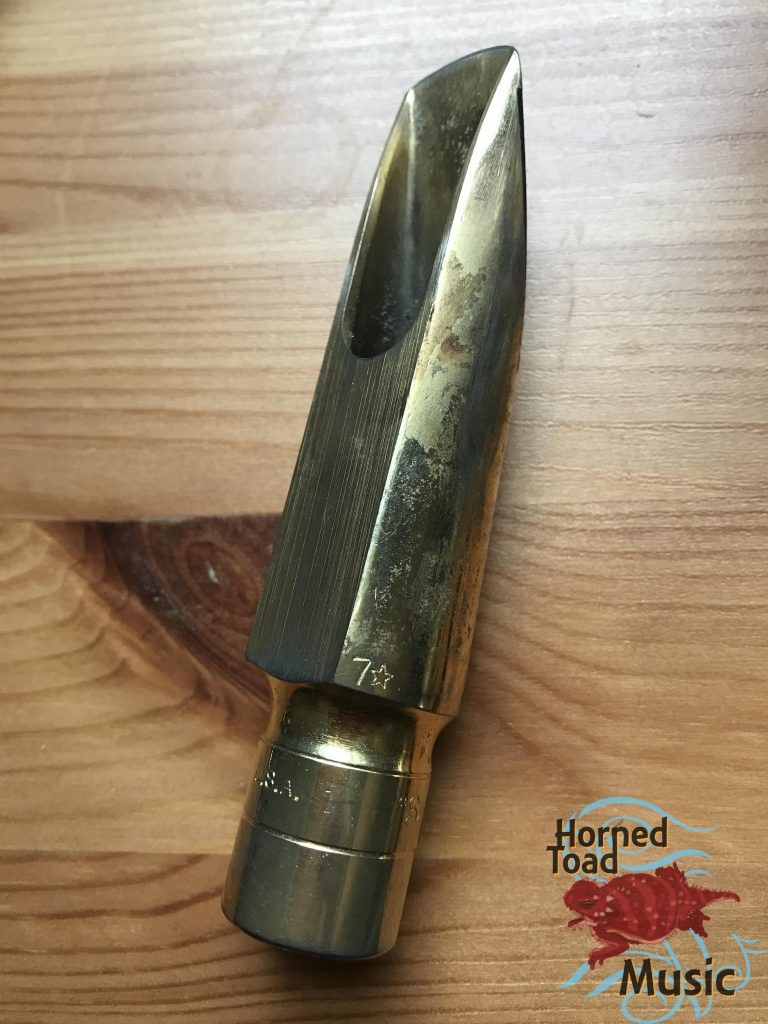I am now offering a very special service that I have pioneered with very interesting results; the Table/facing Transplant, which as far as mouthpieces are concerned is really a heart transplant. No need for the piece to be suffering from congestive heart failure to justify the treatment, but it is about as involved and tricky as a heart transplant.
Many vintage mouthpieces, and especially hard rubber pieces, have what we call a “French Curve” on the cut of the table. What is a French Curve? It is a rounded cut of the table, a concavity of one form or another. In many cases the concavity of the table runs back to front of the mouthpiece table, in other cases it is concave side to side. In some cases it is both, and in many it has not made up its mind.
I have been told by professional well known saxophonists over the years that what made those vintage otto Links and Dukoffs play and sound so specially was the French curve, which makes the reed respond in a particular way. For a while I also considered holding this somewhat mystical belief, but years of hand work, experimentation and observation of results on mouthpiece have shown me the truth of this question.
The “French Curve” as it is called, can contribute to a certain response or sound from the mouthpiece, but not to any extant that a ligature of different material, construction, or shape can, and that is pretty subtle, unless it simply does not fit well, which can be very obvious and a different issue. The specific positive contribution of the French Curve is really that it creates a space underneath the reed (at least temporarily) creating more possibility for vibration, or less dampening of the reed. It was suggested to me by Ernie Sola that the problem with the French Curve was that while the first few minutes of playing might be thrilling, eventually the reed absorbs enough moisture and surrenders to the shape of the curve that the ligature presses it into. I also carefully considered this for a long time working on various mouthpieces, and I have found it to be true.
My favorite Slant Signature Otto Link had a very pronounced concavity in the table. it is one of the earliest Florida models, facing marking on the side, a short blank with a very high barrel shelf over the beak. This was my best sounding Slant Otto Link, for approximately 17 minutes, at which time it became my, ‘sounds a lot like my best sounding Slant Otto Link, but a whole lot stuffier and diffuse sounding Slant otto Link”. This happened repeatedly of course.
One day I had been playing that mouthpiece with a specially good reed, in between sessions working on a clients Dave Guardala tenor piece. When I took that reed out to test the Guardala piece, it squealed like a hog named “BBQ”, chirping and squeaking any number of the most ‘out’ but uncool notes my ear could imagine. of course I could not imagine what the heck was going on because I had done a great job on the Guardala setup. After examining some other possible reasons for the ill wind blowing, I took that reed off and as I did I notice that I could rock that reed on the flat Guardala table on three different facets, which really should not happen. This meant the reed was bent into three separate angles.
As I looked down the length of the reed I could clearly see the relief imprint of the curved table from the Slant otto Link, who’s shape that reed had surrendered to. Now, the problem with the French Curve here, is that it renders a good reed useless on any other mouthpiece, and then beyond that it becomes useless on the mouthpiece it conforms to within less than half an hour anyhow.
The problem with the French Curve situation is also that it tends to be present on old and very nice vintage mouthpiece with usually small facings, or at least facings we would prefer not to have any smaller than they are. In some cases we may even want them larger. The usual solution for the French curve involves sanding the table down until we reach a fully level surface that has one angle AND fully seals the pressure under the reed. Not only does the French Curve allow the reed to be squeezed into an undesirable curve, but that non-level table surface also allows air to leak pressure under the reed and behind the table when it should stop at the facing break.
The problem with the normal approach to addressing the French Curve is also that on these old mouthpieces it would not be at all uncommon to lose one whole digit of tip size reducing from, for example, 7 to 6 (.100 to .090) while sanding that table to level, because the concavity can be quite deep. This is not a reduction I am comfortable with, seeing as many of those piece are already small and many people would even want them larger, certainly not smaller.
So I have found a good solution, based on a lot of thought and years of experimenting. I am at this point able to transplant a new table ONTO the mouthpiece, and even a new facing curve if one wanted to enlarge the tip and curve size without affecting the tip or baffle of the mouthpiece. When opening up a mouthpiece for example we have only a few options:
1) Working the tip, we can re cut the facing curve and sand the tip open provided we have enough material at the tip.
1A) Shortening, if the material at the tip is not enough, we can shorten the tip to achieve a thickness that we can then open.
** results of working the tip will necessarily include an enlarged or lengthened baffle due to the change in angle and increase in material present at the newly angled tip.
2) “Butt Cut”, we can change the angle of the table, rocking it open from the rear, resulting in a larger tip provided we have enough material under the table and height of the table above the shank.
** results of Butt Cut will include a thinning of the floor under the table and the widening of the table itself, as well as a chance in reed angle relative to facing, which will absolutely affect response.
3) Hammering or bending. we can flew the tip open on metal mouthpieces provided the metal is thick/strong enough.
** results of hammering will be an increase in baffle material, weakening of metal at the tip, and even breakage. I never hammer unless it is to straighten a damaged tip, or repair another issue.
The easiest method for opening is of course hammering, which I do not do because it is destructive to the mouthpiece and does not provide a result that resembles how most old mouthpieces were intended to play or sound. The next in line for “easy” (cue sarcasm here) would be the standard working from the tip. It is certainly not easy, but still less involved and troublesome than the Butt Cut, which takes a LOT of sanding and will just as likely result in failure, because it is hard to predict the final angle and whether or not the metal available is sufficient. Most often I would not choose to embark on a Butt Cut, because it is just too tiring, too long, and too unpredictable. The important point here, is that ALL of these methods do involve a change of either angle, or baffle to the mouthpiece, there is no way to avoid it.
The Table Transplant method, while very involved and labor intensive for sure, is one way to avoid changing either the angle of the reed or the configuration of the baffle. With this method we can actually open a piece without affecting the initial design of the mouthpiece, besides the distance of the reed from the tip.
At this point, it IS a very laborious and time consuming process that I would recommend on the smaller scale (Table Trasplant) for mouthpieces that are great but suffer under the reed killing French Curve, and on the larger scale (Facing Transplant) for special mouthpieces we might want to open up without altering significantly.
M


